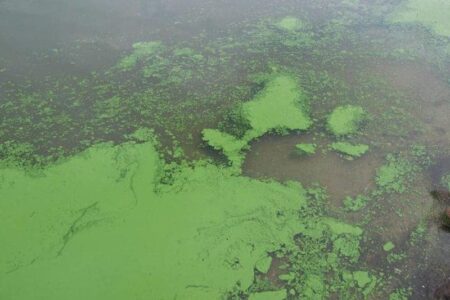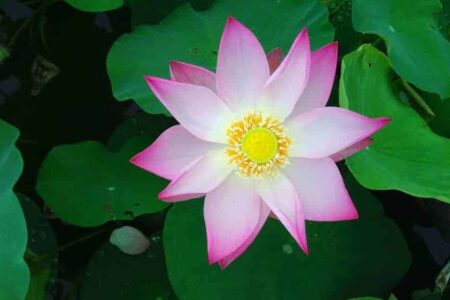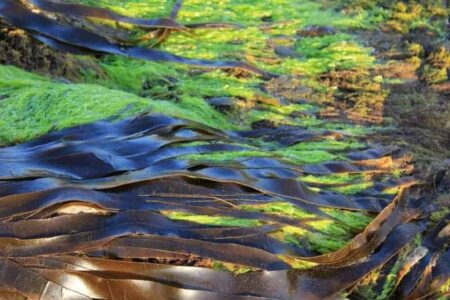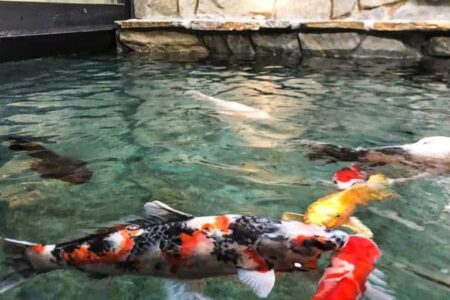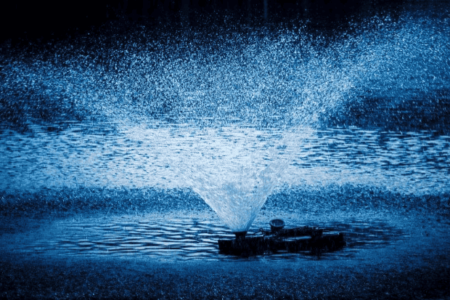Algae or alga (singular) is a catch-all casual term to describe a broad and diverse range of organisms that are not all necessarily closely related. For example, some algae in freshwater lakes and wetland ponds can be a cyanobacteria in which some strains of are toxic and others aren’t. Oddly enough, although sometimes referred to as “blue-green algae,” it is not actually a real alga. There are several different forms that cyanobacteria may express itself including floating mats, colonial hair-like filaments often called “filamentous algae” which can also be a slime that is coated on plants, or is suspended within the water column which looks like pea soup. Need algae and lakeweed treatment? Contact us today


Cyanobacteria Overview
Cyanobacteria is a very important aspect of a healthy pond system and makes a significant contribution to water oxygenation. In numerous human-made artificial waterways like canals runoff is a type of omnipresent issue that results from nutrient loading from landscaping fertilizers, wild animal and pet waste, grass clippings, and eroded sediment. These conditions can upset an aquatic system’s balance and require increased retention pond maintenance in municipal and private stormwater basins. Cyanobacteria is very efficient at removing those free nutrients out of the water and using them for growth. This can, unfortunately, result in explosive, massive algal blooms caused by external factors and may even result in harmful toxins being released and produced by cyanobacteria as a defense against competing organisms. Those toxins may be very harmful to humans, pets, other wildlife, and fish. This can happen on any small residential property or commercial property with water lakes, ponds, even fountains.Cyanobacteria Management
The first step in getting cyanobacteria under control is managing the conditions causing algal blooms by reducing nutrient loading. Lake Management Inc teaches its customers to maintain a healthy, balanced system by working with property managers, landscapers, and homeowners to make informed intelligent decisions. Lake Management Inc is also an aquatic industry leader who helps its customers keep their lakes and ponds healthy and clean and maintain concentrations of cyanobacteria at manageable, beneficial levels.Algae Control Options
The EPA (Environmental Protection Agency) has approved algaecides, or algae killers, that are made from carbonate peroxyhydrate products. These algaecides invade algae habitats to prevent them from blooming. Grass carp are an alternative to using algaecides. They are fish that feed on algae and are natives of Asia. They can be raised to be sterile so that when you place them in the lake in order to control algae, the other fish species will not be overrun. When phosphorus is added to a lake it will limit algae from blooming and growing in freshwater lakes. The growth of algae will be canceled by having high phosphorus levels and other nutrients.
Aeration & Fountain Systems
All natural lakes experience changing seasons. Algae may bloom whether or not there are aerators. However, if there is not an aerator in the lake, sediment may collect on the bottom and alter the composition chemically through the decomposition process. Without any controls in place, algae blooms may arise more frequently and the balance of the aeration will be disrupted.Algae Eating Fish Stocking
Grass carp are an effective alternative that can be used instead of algaecides to eat filamentous algaes and other bottom of the pond algaes similar to “pond muck”. These fish feed on algae and are natives of Asia. They can be raised so they are sterile. That way when they are placed in the lake for controlling algae, the other fish species will not be overrun by them.




